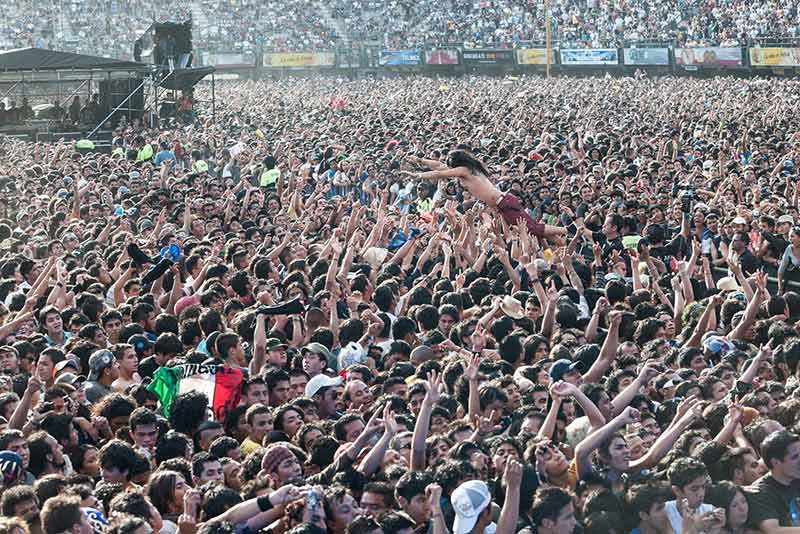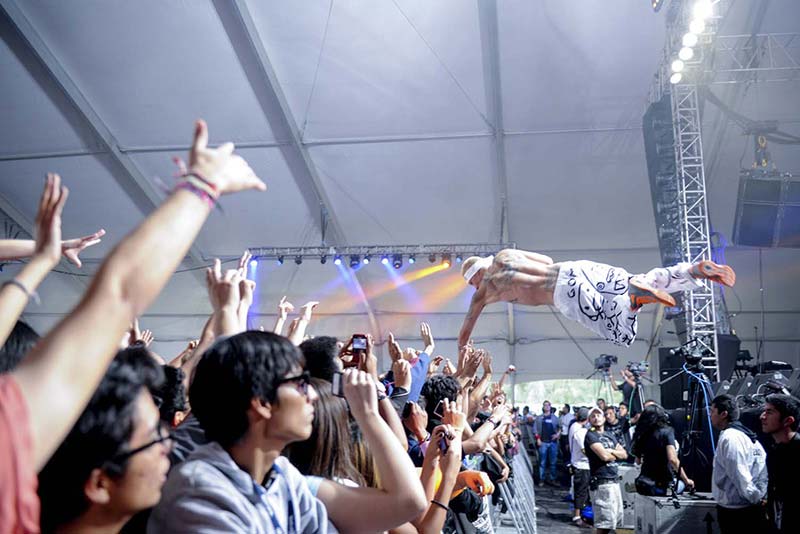By Mauricio González Lara
MEXICO CITY ― “We plan, God laughs,” says an old Yiddish proverb. The live events industry saw the truth of this statement first-hand after the COVID-19 pandemic reached Mexico in 2020.
Just ask Diego Jiménez Labora.
Jiménez Labora is founder and director of the Ceremonia Festival, which has attracted legends and established acts such as Massive Attack, Bjork, Underworld, and Beck, as well as emerging artists such as St. Vincent, James Blake, and Arca. But the pandemic shut down all mass gatherings and live events.
“The hardest part was to overcome that cold moment when we understood that the pandemic was going to last years and not months,” said Jiménez Labora. “The uncertainty was almost unbearable.”
The uncertainty is over ― at least for the moment ― and after a two-year hiatus, the appetite for live shows in México is immense. But this is not 2019. There’s been a big shift: Unlike other years that featured mostly rock and pop acts from English-speaking nations, the massive events of this spring and summer are characterized by a wide array of Latin artists and urban rhythms, a cultural change that underscores the emergence of Latin America’s creative industries.
Building back
Jiménez Labora ― a music promoter since 2005 and head of ECO Live (organizer of Trópico, Radiobosque, and the Mexican chapter of Sonar, the renowned European electronic music festival) ― was among many in the music industry who incurred losses during the pandemic.
In the Entertainment and Media Outlook 2020 report, PricewaterhouseCoopers (PWC) stated that 2019 concert revenues in Mexico were around $225 million and predicted an increase to $276 million in 2020. Unfortunately, according to the 2021 edition of the PWC report, the live music segment experienced a 77.9 percent drop in 2020. PWC also estimates that the music industry (recorded and live) in México produced $814.64 million in revenues during 2021.

Puerto Rican rapper Residente at the 2022 Vive Latino Festival. Photo by Toni Francois.
The pandemic also put on a hold a major deal.
In July 2019, Live Nation, the world's leading live entertainment company, announced its intention of acquiring a 51 percent controlling stake in the Latin American promoter OCESA Entretenimiento, the owner of Ticketmaster México and a concert giant that promotes more than 3,100 events for around 6 million fans annually in México and Colombia. Compañía Interamericana de Entretenimiento (CIE), the original owner of OCESA, would remain in control of the other 41 percent. Ticketmaster México is the leading ticketing company in México, with around 20 million tickets sold annually before the pandemic.
After the negotiations were paused in 2020, Live Nation moved forward with the acquisition in 2021. It will take time to reach a full recovery, but early signs look promising: As a result of the success of festivals like Vive Latino, Electronic Daisy Carnival (EDC) and Coldplay concerts in Guadalajara and Monterrey, OCESA is showing solid results this year.
“OCESA´s financial performance for the quarter exceeded its 2019 results. Latin America is expected to have record attendance for our concerts this year,” declared Michael Rapino, CEO of Live Nation, during the presentation of the 2022 first quarter results of his company.
The momentum is palpable. When Ceremonia was celebrated in April 2022, it attracted around 32,000 people.
Ceremonia is in good company. “Basically all the events in 2022 have been sold out or near sold out. I think the appetite is going to diminish at some point, but so far, the business looks great,” said Jiménez Labora.
Best audience in the world?
In México, we obsessively call ourselves “the best audience in the world.” As any avid concertgoer knows, such an idea can have unintended consequences. Because many Mexicans equate shouting with passion, at many concerts the artists’ performances seem to be the least important element of the event. Instead, audiences, wanting to live up to our reputation, scream.

Presented by OCESA, the massive Vive Latino Festival gathers artists from all over Latin America and Spain. Photo by: Toni Francois.
Timing is essential: breaks between songs are cues to scream as loud as possible. Once the music starts, concertgoers return to behavior similar to high school, when the teacher turned her back to write on the blackboard: they move nervously, take dozens of selfies and shout out for “chelas” (cervezas, beer).
Despite how this appears to outsiders, Mexicans have a deep social affinity with live music. Three decades ago, the concert industry was almost an illegal endeavor, when a mix of moral conservatism and economic protectionism blocked the possibilities to enjoy youth music and bring artists to México. Now, concerts are synonymous with freedom and openness.

The Rolling Stones at Foro Sol, before the pandemic. Photo by: Toni Francois
Toni Francois, an accomplished photographer, has been a privileged witness to this cultural effervescence. Her website, Tono TV, is a visual library of how Mexican youth culture celebrates music, both foreign and local.
Because of her status as an influencer ― Francois has major followings on social media ― she was able to continue bringing in income during the pandemic, collaborating with brands and doing other photo shoots. Her main interest is the charisma of the performer and the energy in the room. Not surprisingly, she grasped immediately the growing importance of Latin urban artists in recent years.
“When Bad Bunny came to México for the first time, I was the only photographer there,” she said. “Everyone said that he wasn´t a real musician, but that´s what fascinated me. It was very clear to me that the guy was going to be a superstar. Now Bad Bunny is a global icon that can fill the Aztec Stadium in a couple of hours.”
Jiménez Labora is also excited about the influx of Latin musicians that is defining the music industry: “Ceremonia is a snapshot of what´s happening now, so this year we decided to showcase artists like C. Tangana, Natanael Cano, Nicki Nicole, and Tainy. Rosalía performed with enormous success during our 2019 show, but this time around Latin artists were all over the place. They´re huge. Just look at the charts!”

South African hip hop group Die Antwoord in Corona Capital Festival in México City. Photo by Toni Francois.
On the same weekend as Ceremonia 2022, artists as diverse as Los Punsetes, A-HA, DJ Sasha, Él mato a un policía motorizado, and Coldplay played in México City. Whether the performance features a rock band or a reggaeton combo, one thing is certain: Mexicans feel good to be part of a collective ritual that allows us to reconnect with an essential part of who we are as human beings.
Live music is back, baby, and so are we.
Mauricio González Lara is an IFC communications officer based in Mexico City.
Published in June 2022
